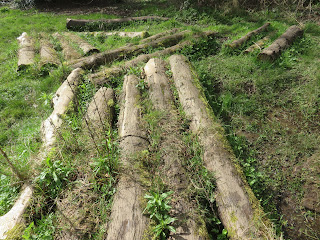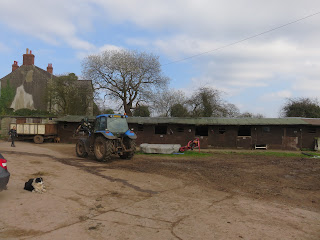PONDS (in 750 words in 3-word sentences only)
Ponds are wet. Ponds are deep. Pondwater is cold. Edges are shallow. Marginal plants grow. Willows grow poolside. Ponds house frogs. Ponds house newts. Ponds house sticklebacks. Fish need ponds. Water lily floats. Frogbit floats too. Duckweed floats too. Dragonflies hunt insects. Damselfly is graceful. Damselfly is smaller. Damselfly looks exotic. Dragonfly looks prehistoric. Dragonfly is prehistoric. Mud is deep. Mud is stinking. Mud is mucky.
Ducks swim together. Ducks can dabble. Drakes are attractive. Ducks attract humans. Humans feed ducks. Humans hunt ducks. Ducklings are cute. Waterfowl need ponds. Grebes like ponds. Grebes are divers.
Swans like ponds. Swans are beautiful. Swans build nests. Water weeds choke. Parrot’s feather invades. Pond weeds invade. Canadian pondweed invades. Watercress is edible. Pondskaters surface walk. Water crickets skate. Water measurers walk. Pond surface fascinates. Flowering rush flowers.
Tadpoles form shoals. Frogs spawn annually. Male frogs croak. Toads gather too. Males grab females. Males kick males. Ponds are source. Spawn is jelly. Amphibians need freshwater. Dragonfly nymphs hunt. Nymphs eat tadpoles. Nymphs are masked. Camouflage works well. Nymph transforms magically. Caddisfly larva hides. Herons hunt frogs. Herons eat fish. Herons stand tall. Herons stay still. Herons seek ponds.
Water boatmen sing. Water bug predates. Water bugs bite. Water beetle hunts. Water beetle flies. Water boatmen fly. Reedmace is edible. Summer evaporates water. Newts all leave. Water snails feed. Water scorpions hunt. Leeches sometimes swim. Pondwater is home. Ponds are stagnant. Flatworms are weird. Moths need reeds. Waterfowl need reeds. Bats like ponds.
Ponds are fascinating. Ponds smell natural. Ponds are ornamental. Winter ponds freeze. Water is icy. Pond surface freezes. Spring returns life. Ponds attract kids. Kids catch tadpoles. Ponds are dangerous. Deep water drowns. Humans drain ponds. Ponds are needed. Rare pondlife exists. Ponds have parasites. Humans destroy pondlife. Humans destroy ponds. Wildlife find ponds. Wildlife seek ponds.
Snakes need ponds. They hunt frogs. Snakes eat newts. Human ponds help. Ponds get fewer. Ponds were childhood. Ponds were traditional. Village ponds existed. Farms had duckponds. Parks had ponds. Parks use ponds.
Ponds supported wildlife. Ponds give life. Ponds are natural. Humans need ponds. Ponds form habitats. Ponds are worlds. Ponds are wetlands. We explore ponds. Pondlife is amazing. Pondlife must adapt. Microscopic pondlife lives. Microscopes view rotifers. Cyclops are crustaceans. Water fleas swarm. Water mites vary. Amoebas can divide. Ponds appeal aesthetically. Lily pool appeals. Ponds inspire artists. Ponds are photogenic. Ponds were youth. Ponds were upbringing. Ponds are missing. Pond explorations excite. Ponds can stimulate. Ponds inspire poetry. Ponds inspire art. Some pondlife float. Some pondlife swim.
Some are mud-dwellers. Some pondlife arrive. Some pondlife depart. Ponds are fun. Ponds are intricate. Ponds delight naturalists. Ponds delight botanists.
Ponds delight people. Ponds are visual. Ponds are seasonal. Ponds dry up. Ponds fill up. Ponds are fleeting. Ponds are alive. Ponds are memorable. Ponds look ancient. Ponds look new. Ponds form connections. Ponds are green. Ponds reflect sunlight. Ponds reflect moonlight. Ponds show seasons. Ponds can drown. A pond protects. Ponds get cold. Ponds can endure. Ponds are leafy. Ponds absorb death. Ponds cause death. Ponds engender life. Ponds use decomposition. Ponds feed animals. Ponds feed birds. Ponds feed amphibians.
Ponds feed insects. Ponds feed invertebrates. Ponds feed mammals. Ponds provide water. Ponds can shine. Ponds can sparkle. Ponds go dark. Ponds fool us. Ponds scare people. Ponds are joy. Each pond differs. Ponds age well. Ponds change quickly. Ponds process life. Ponds are polluted. Ponds are clean. Ponds show cycles. Ponds show signs. Ponds give clues. Ponds take water. Ponds need water. Ponds are temporary. Ponds inspire thinking. Ponds can flood. Ponds can lessen. Ponds can disappear. Ponds can return. People make ponds. People desire ponds. People sell ponds. Plastic ponds work. Ponds are artificial. Concrete ponds endure. Ponds need protection.
Ponds beautify parkland. Ponds beautify gardens. Ponds need attention. Ponds are returning. Ponds were common. Pond mud sets. Pond mud cracks. Clay ponds exist. Marshes surround ponds. Bogs surround ponds. Streams form ponds. Trees overlook ponds. Reeds surround ponds. Ponds warm up. Ponds can chill. Ponds are environments. Ponds support vegetation. Ponds need conservation. Ponds feed us. Ponds are worldwide. Ponds need rain. Ponds collect water. Ponds drain land. Ponds provide sustenance. Ponds nourish lifeforms. Ponds are calm. Ponds are peaceful. Ponds are balanced. Ponds show harmony. Ponds are mirrors.
Ponds reflect faces. Ponds are dreams. Ponds inspire introspection. Pond snail sticks. Ramshorn snail spirals. Kingfishers like ponds. Ponds fill depressions. Ponds swallow excess. Ponds fill fast. Vernal ponds expire.



































